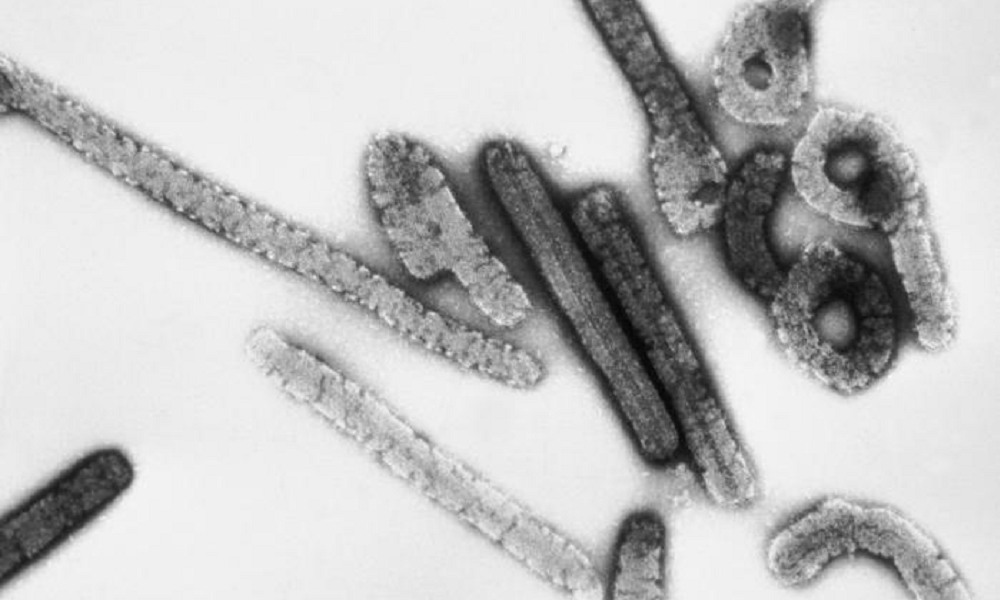Reviews
Fresh Approaches to Holistic Recovery: Blending Mind, Body, and Community

Key Takeaways
- Holistic recovery addresses healing across mind, body, and spirit instead of focusing solely on symptoms.
- Successful recovery incorporates therapy, lifestyle change, nutritious living, and community belonging.
- Simple practices—like mindfulness or nutrition—can offer immense support on the recovery journey.
- Evidence supports blending proven treatments with holistic activities for better outcomes.
- Community connection and reduced stigma increase self-worth and recovery durability.
Table of Contents
- What Are Holistic Principles in Recovery?
- Popular Holistic Therapies and Practices
- Blending Evidence-Based & Holistic Approaches
- The Surprising Role of Nutrition and Physical Health
- Why Community Matters More Than Ever
- Mindfulness and Movement for Lasting Change
- Overcoming Stigma and Building Self-Worth
- Real Stories: The Power of Whole-Person Healing
What Are Holistic Principles in Recovery?
Holistic recovery is rooted in the understanding that lasting healing happens when the whole individual is cared for—mind, body, and spirit, all working together to support transformation. This approach recognizes that substance use disorders rarely happen in a vacuum, and that addressing only the symptoms often leaves deeper needs unmet. This multidimensional philosophy is becoming the standard at many centers, including Heartwood Recovery. People seeking support are encouraged to prioritize every aspect of their health, knowing that emotional, physical, and social well-being are interdependent. Holistic recovery does not isolate treatment to therapy or medication. Instead, it embraces improved lifestyle habits, meaningful relationships, and renewed life purpose. These changes reinforce and extend the gains made in treatment, making it possible to maintain progress beyond the clinical setting. Focusing on daily routines—like healthy sleep, structured activity, nutrition, and positive relationships—becomes a practical roadmap for support in the real world, enabling recovery to take root and flourish.
Popular Holistic Therapies and Practices
The holistic toolbox is vast and ever evolving, offering creative, experiential, and gentle practices to supplement traditional therapeutic work. Mind-body activities such as yoga, tai chi, and pilates provide more than physical benefits—they ground individuals in their bodies and calm the mind. The rhythmic breathing and controlled movement involved in yoga, for example, are scientifically shown to lower cortisol levels and relieve anxiety, which often spike during early recovery.
- Yoga and Movement: These forms of exercise improve flexibility and muscular strength and build resilience against triggers and emotional stress. Group yoga classes can foster belonging and gentle accountability, which are protective for long-term sobriety.
- Art and Music Therapy: Art therapy channels self-expression that may be difficult to articulate with words, while music therapy leverages rhythm and melody to boost mood and facilitate healing. Both therapies have been adopted in recovery programs because they offer safe, judgment-free spaces for exploration and emotional release.
- Nutrition Counseling: Nutrition therapy teaches how to rebuild a healthy relationship with food and reduce nutrient deficiencies that can negatively affect mental health. Over time, learning to appreciate better eating habits leads to increased self-efficacy and a focus on self-care in other areas of life.
- Nature Therapy: Activities like gardening and hiking connect people to the natural world, offering moments of peace and perspective. Research highlights that the outdoors can decrease depressive symptoms and enhance overall psychological health.
Holistic practices offer practical outlets for processing stress and regaining a sense of control. They help rebuild trust in oneself and lay a foundation for creative problem-solving when challenges arise.
Blending Evidence-Based & Holistic Approaches
For true, sustainable recovery, blending well-established clinical interventions with holistic methods is increasingly recognized as the gold standard. It means that cognitive behavioral therapy (CBT), dialectical behavior therapy (DBT), and medication-assisted treatment (MAT) are combined with mindfulness, movement, and nutrition. Programs integrating these approaches tend to show higher engagement, improved self-esteem, and greater retention.
- Someone may attend CBT sessions to work through negative thought patterns, then participate in weekly group yoga to process those emotions somatically.
- Nutrition counseling may be paired with medically assisted interventions, giving the body a better platform for healing and making the mind more receptive to change.
- Programs that foster social connection—peer groups, group activities, volunteerism—allow individuals to practice new interpersonal skills and develop genuine support systems.
Flexibility is key. Because no two people share the same history or needs, recovery plans are most effective when personalized, adaptable, and built on evidence and human experience.
The Surprising Role of Nutrition and Physical Health
Nutrition directly affects energy, brain chemistry, and resilience in recovery. Many experience nutritional imbalance after prolonged substance use, which can intensify cravings, fatigue, and mood swings. Rebuilding the body through nutrient-rich meals—incorporating complex carbs, healthy fats, fruits, and lean proteins—restores chemical balance and offers a natural mood boost.
Physical movement is an equally powerful tool. Even modest exercise can increase endorphin production, improve sleep cycles, regulate appetite, and lessen the anxiety that often hampers early sobriety. For example, establishing a routine of brisk daily walks can promote mindfulness, offer a change of scenery, and give structure to days that might otherwise feel overwhelming. Over time, these seemingly small changes strengthen willpower and teach that the body deserves care at every stage of recovery.
Why Community Matters More Than Ever
Human connection is a protective factor in healing. Loneliness and isolation are commonly reported among people with substance use struggles, so rebuilding connections is crucial. Group support—whether in 12-step meetings, nontraditional support circles, or online recovery communities—provides a sense of belonging and helps counter shame and self-doubt. Positive social support makes it easier to navigate setbacks and celebrate milestones.
The accessibility of virtual support has revolutionized recovery for many, breaking down barriers for those unable to attend in-person meetings. Consistently showing up for community groups, sharing progress, and supporting others builds an uplifting cycle. It, in turn, cultivates a strong sense of meaning and commitment, giving individuals extra motivation to stay on course during difficult times.
Mindfulness and Movement for Lasting Change
Mindfulness-based strategies are ideally suited for navigating cravings and intense emotions in recovery. Regular meditation—even for just five or ten minutes a day—can reduce stress and improve the ability to respond thoughtfully rather than impulsively. These skills anchor individuals in the present, break the grip of rumination, and encourage regular self-reflection.
Movement dovetails seamlessly with mindfulness. Tai chi, walking meditation, or gentle stretching combine mental focus with physical activity, further grounding and calming the nervous system. Together, mindfulness and movement lay the groundwork for better sleep, improved self-esteem, and the growth of new, positive habits. They empower people to find healthy alternatives to old routines and become powerful tools for relapse prevention.
Overcoming Stigma and Building Self-Worth
Stigma remains one of recovery’s most significant obstacles, undermining dependence and the desire to seek help. Recognizing and challenging these negative beliefs is crucial. Building a recovery environment rooted in respect and understanding—whether online or in person—fosters openness and supports long-term goals.
Journaling, art, and group sharing are practical ways to nurture self-compassion. Stepping beyond comfort zones, trying new activities, and celebrating small victories—cooking healthy meals, volunteering, or simply showing up—help reshape identity. In these moments, self-worth is reinforced, eroding the power of societal stigma and empowering individuals to take ownership of their narrative.
Real Stories: The Power of Whole-Person Healing
Every journey in recovery is different, but a common thread among many is the rediscovery of joy and self-acceptance. For instance, individuals who once felt stuck in cycles of isolation often describe joining a hiking group or an art class as a turning point—they regain confidence in social settings and develop healthy outlets for stress. Others find meaning in learning to cook for themselves, describing how even basic meals promote dignity, routine, and a sense of accomplishment.
These real-life stories illustrate that holistic recovery is not just about abstinence. It’s about opening door experiences, building supportive networks, and nurturing self-compassion. The journey becomes less about what one leaves behind and more about the life being built—a life marked by resilience, creativity, and genuine connection.

-

 World3 days ago
World3 days agoEthiopian volcano erupts for first time in thousands of years
-

 Legal1 week ago
Legal1 week agoMichigan man JD Vance sentenced to 2 years for threatening Trump and JD Vance
-

 Legal1 week ago
Legal1 week agoWoman in critical condition after being set on fire on Chicago train
-

 World1 week ago
World1 week agoHurricane Melissa registered 252 mph wind gust, breaking global record
-

 Legal6 days ago
Legal6 days agoSuspect in San Diego stabbing shot by authorities after fleeing into Mexico
-

 Legal1 week ago
Legal1 week ago1 dead, 2 injured in shooting at Dallas Walmart parking lot
-

 Health6 days ago
Health6 days agoMarburg virus outbreak in Ethiopia grows to 6 confirmed cases
-

 Legal6 hours ago
Legal6 hours agoUtah Amber Alert: Jessika Francisco abducted by sex offender in Ogden




